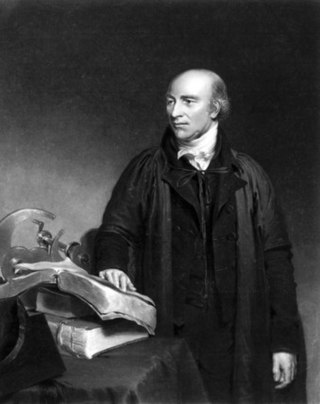Related Research Articles

1822 (MDCCCXXII) was a common year starting on Tuesday of the Gregorian calendar and a common year starting on Sunday of the Julian calendar, the 1822nd year of the Common Era (CE) and Anno Domini (AD) designations, the 822nd year of the 2nd millennium, the 22nd year of the 19th century, and the 3rd year of the 1820s decade. As of the start of 1822, the Gregorian calendar was 12 days ahead of the Julian calendar, which remained in localized use until 1923.
The year 1787 in science and technology involved some significant events.
The year 1833 in science and technology involved some significant events, listed below.
The year 1834 in science and technology involved some significant events, listed below.
The year 1840 in science and technology involved some significant events, listed below.

The year 1791 in science and technology involved some significant events.
The year 1809 in science and technology involved some significant events, listed below.
The year 1776 in science and technology involved some significant events.
The year 1804 in science and technology involved some significant events, listed below.
The year 1794 in science and technology involved some significant events.
The year 1878 in science and technology involved many significant events, listed below.
The year 1797 in science and technology involved some significant events.
The year 1803 in science and technology involved some significant events.
The year 1857 in science and technology involved some significant events, listed below.

The year 1843 in science and technology involved some significant events, listed below.

William Beaumont was a surgeon in the U.S. Army who became known as the "Father of Gastric Physiology" for his research on human digestion on Alexis St. Martin.

Alexis Bidagan dit St-Martin was a Canadian voyageur who is known for his part in experiments on digestion in humans, conducted on him by the American Army physician William Beaumont between 1822 and 1833. St-Martin was shot in a near-fatal accident in 1822. His wound did not heal fully, leaving an opening into his stomach. Studies of St-Martin's stomach led to greater understanding of the stomach, gastric juices and the processes of digestion.

William Farish (1759–1837) was a British scientist who was a professor of Chemistry and Natural Philosophy at the University of Cambridge, known for the development of the method of isometric projection and development of the first written university examination.
John Henry WishartFRCSEdFRSE was a Scottish surgeon who worked at the Royal Infirmary of Edinburgh. Although a general surgeon, he developed a special interest in the diagnosis and treatment of eye disease. He translated into English three major works of the Italian anatomist and surgeon Antonio Scarpa. With John Argyll Robertson, Wishart jointly founded the Edinburgh Eye Dispensary. He was surgeon in Scotland to King George IV and served as President of the Royal College of Surgeons of Edinburgh from 1820 to 1822.
References
- ↑ Hyman, Anthony (1982). Charles Babbage: Pioneer of the Computer . Oxford University Press. p. 51ff. ISBN 0-19-858170-X.
- ↑ Crilly, Tony (2007). 50 Mathematical Ideas You Really Need to Know. London: Quercus. p. 85. ISBN 978-1-84724-008-8.
- ↑ Farish, William (1822). "On Isometrical Perspective" (PDF). Transactions of the Cambridge Philosophical Society. 1: 1–19. Retrieved 2012-05-29.
- ↑ Jones, Barclay G. (1986). Protecting historic architecture and museum collections from natural disasters. Ann Arbor: University of Michigan. p. 243. ISBN 0-409-90035-4.
- ↑ Moorhouse, Charles Edmund (1974). Visual messages: graphic communication for senior students.
- ↑ Beaumont, William; Combe, Andrew (1838). Experiments and Observations on the Gastric Juice, and the Physiology of Digestion (reprint ed.). Edinburgh: MacLachlan & Stewart. ISBN 0-486-69213-2 . Retrieved 2010-09-06.
- ↑ Wishart, J. H. (1822-07-01). "Case of Tumours in the Skull, Dura Mater, and Brain". Edinburgh Medical and Surgical Journal. 18 (72): 393–397. ISSN 0963-4932. PMC 5828850 . PMID 30332030.
- ↑ Ramsden, R. T.; Birch, J. M.; Evans, D. G. R. (1999-12-01). "Paediatric presentation of type 2 neurofibromatosis". Archives of Disease in Childhood. 81 (6): 496–499. doi:10.1136/adc.81.6.496. ISSN 0003-9888. PMC 1718148 . PMID 10569966.
- ↑ Clermontel, Danièle; Clermontel, Jean-Claude (2009). Chronologie scientifique, technologique et économique de la France. Paris: Publibook. p. 241.
- ↑ Port, M. H. (2004). "Banks, Sir Edward (1770–1835)". Oxford Dictionary of National Biography . Oxford University Press. doi:10.1093/ref:odnb/1294 . Retrieved 2010-10-31.(subscription or UK public library membership required)
- ↑ "Copley Medal | British scientific award". Encyclopedia Britannica. Retrieved 22 July 2020.